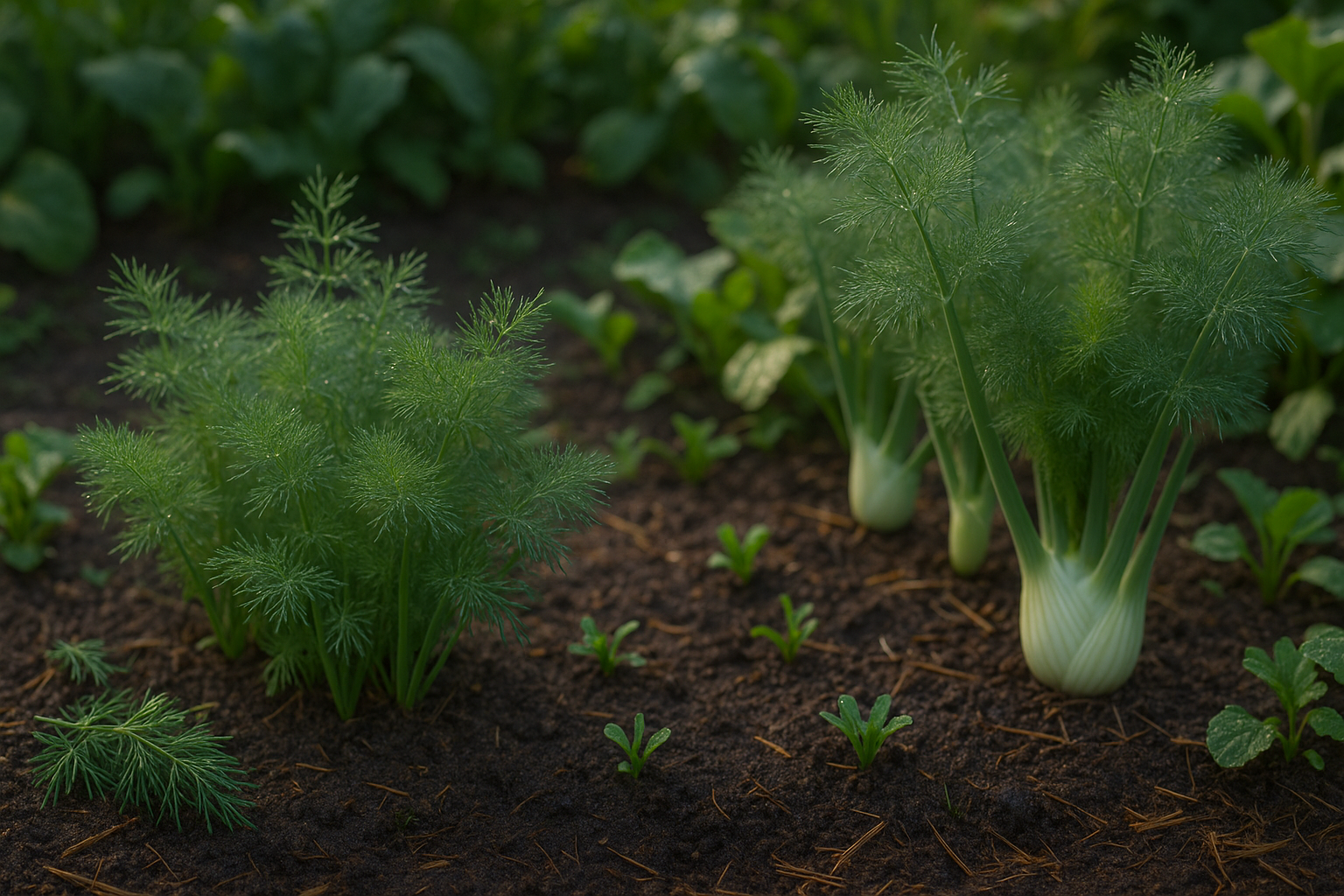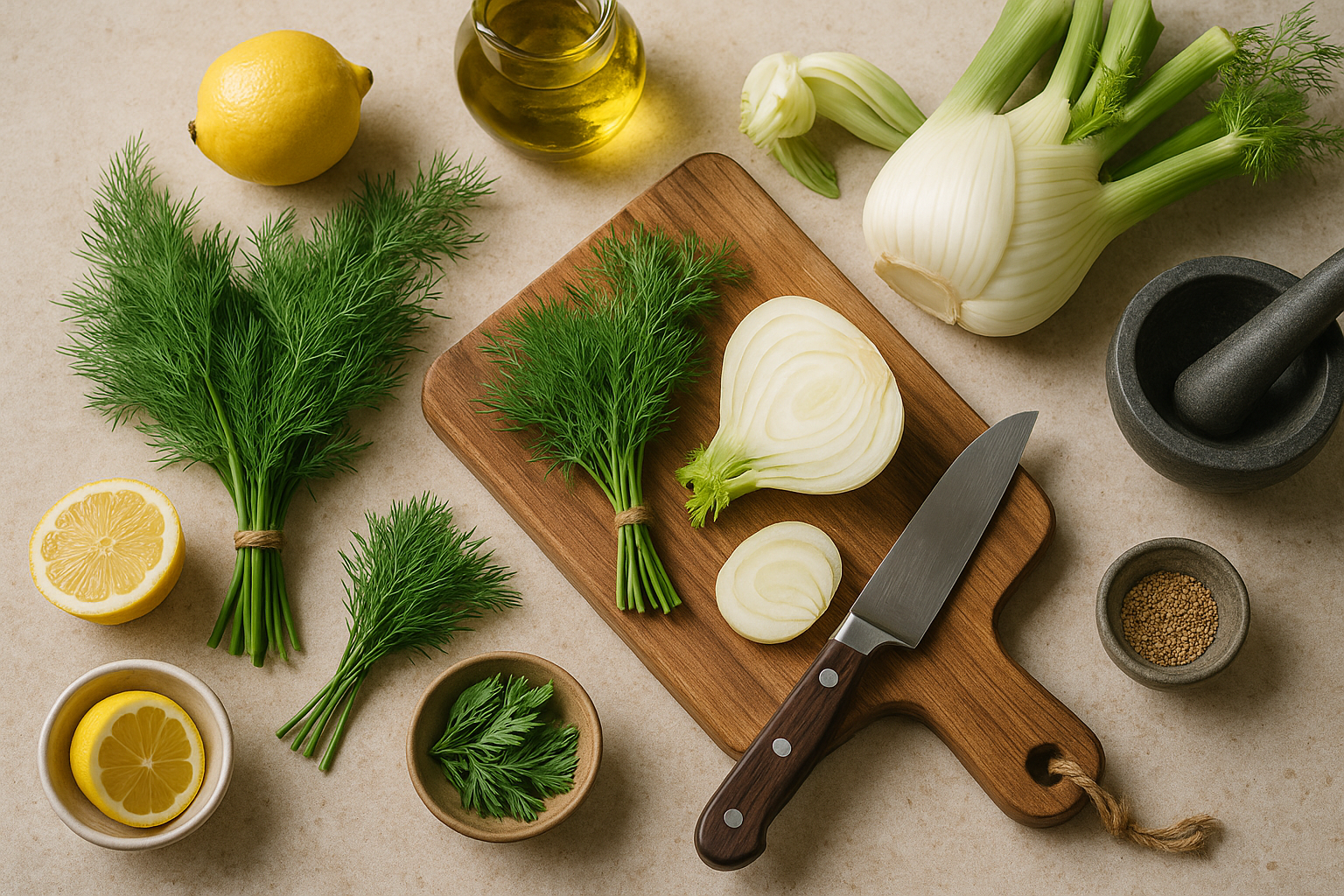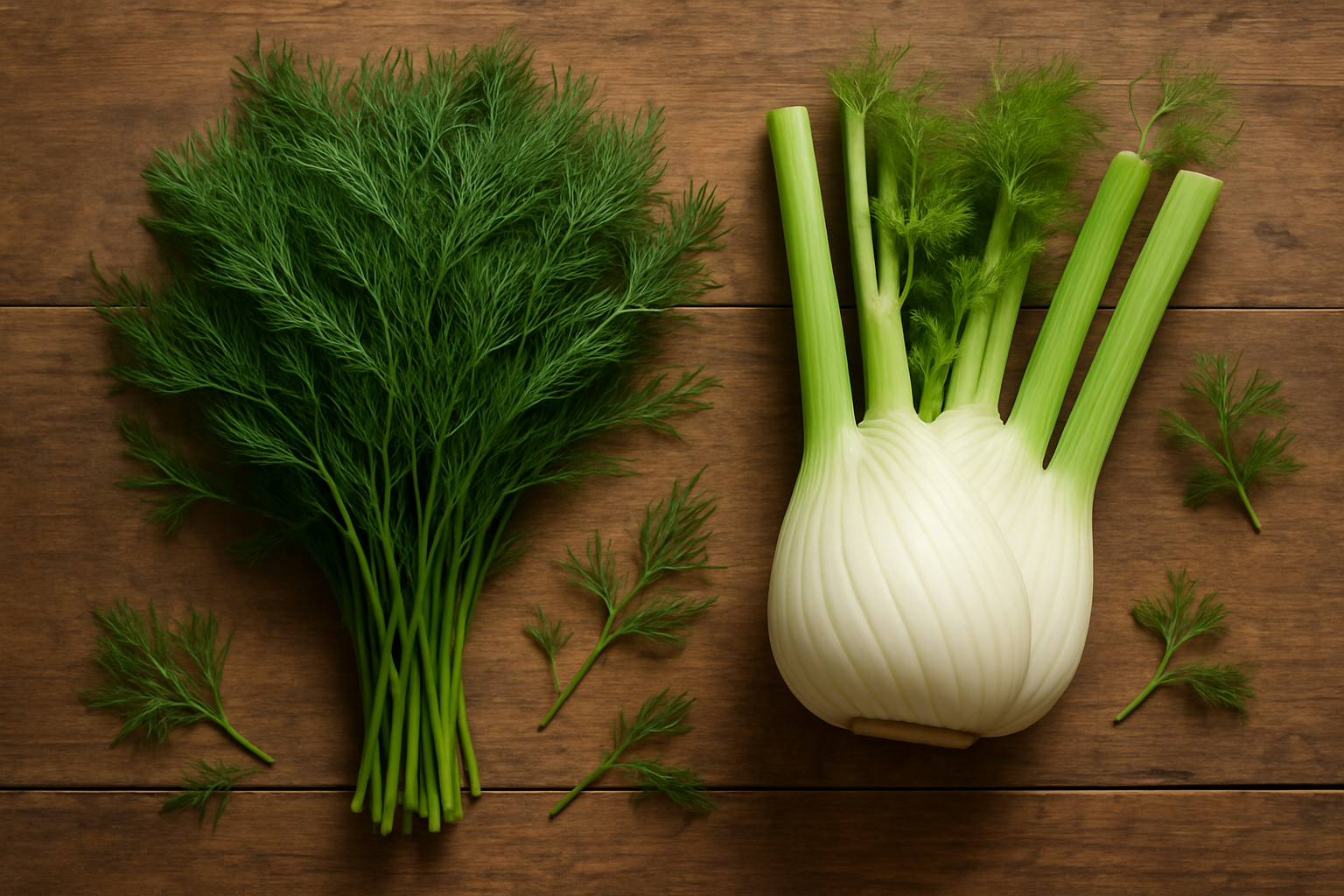Intro
Many cooks and gardeners find themselves puzzled by the strikingly similar appearance of dill and fennel. Both herbs boast feathery green leaves and tall, slender stalks, often sharing space in recipes and herb gardens. However, dill is typically more delicate, offering wispy leaves and a subtle anise flavor, while fennel stands out for its bolder, bulbous base and a sweeter, licorice-like taste.
The visual cue of fennel’s thick, white base can often help you spot the difference in the market. Understanding these distinctions matters, especially in cooking—using dill instead of fennel, or vice versa, can noticeably change the flavor profile of a dish.
Gardeners, too, benefit from telling them apart, as these plants have different sunlight, spacing, and watering needs. By learning to differentiate dill from fennel, you’ll enjoy fresher meals and healthier herb gardens.
Botanical Background

Dill (Anethum graveolens) and fennel (Foeniculum vulgare) are both aromatic members of the Apiaceae family, the same plant group as carrots, parsley, and celery. While they share feathery leaves and umbrella-shaped flower clusters, they are distinct species: dill is native to southwestern Asia and the Mediterranean, whereas fennel mainly hails from the Mediterranean region.
These differences influence how they grow—dill is an annual, completing its life cycle in one season, while fennel is a perennial that returns year after year. In the garden, it’s tempting to plant them side by side, but it’s better to keep some distance. Dill and fennel can cross-pollinate, sometimes resulting in offspring with muddled flavors that don’t capture the best of either herb.
A practical tip is to place them in separate corners or put other tall plants in between to minimize cross-contamination. Whether you love dill’s fresh bite or fennel’s sweet anise notes, giving each its own space helps preserve their unique qualities in your culinary garden.
Spotting the Differences
Telling fennel and dill apart is easy once you know what to look for. Fennel has thick, upright stems and a crisp, white bulb at its base that’s often used in cooking, while dill lacks a bulb and instead shows off wispy, feathery leaves and slender, hollow stems.
In terms of size, fennel grows much taller—sometimes up to five feet—while dill tends to stay around two to three feet tall and appears airier. Their flowers also differ: both produce yellow blooms, but fennel’s flower clusters are broader, tight, and umbrella-shaped, whereas dill’s are more delicate and loosely spread in flat-topped umbels.
Leaf shape is a major clue; fennel offers finely divided, threadlike leaves with a subtle licorice fragrance, while dill’s leaves are even finer and softer, resembling green mist. Growing season also sets them apart: dill is a cool-season annual, best planted in spring or fall, thriving in milder climates, whereas fennel, especially the bulbing type, enjoys warmer weather and can handle a longer season.
If you’re picking one for your garden, remember fennel prefers full sun and well-drained soil, and dill does well in similar conditions but bolts quickly if it gets too hot.
Flavor and Scent
Dill and fennel each bring unique aromas and flavors to the kitchen, making them favorites for distinct culinary uses. Dill, known for its feathery green leaves, has a fresh, tangy taste with grassy and slightly anise-like notes, but is much milder than fennel. Its aroma is clean and almost citrusy.
Dill leaf, often called dill weed, is the most commonly used part and shines in dishes like Scandinavian gravlax (cured salmon), potato salads, and classic pickles, where its subtle flavor complements without overpowering.
Fennel, on the other hand, offers a stronger, sweeter, and unmistakably licorice-like taste. Both the crunchy white bulb and the fronds (leafy greens) are used, but the seeds are also popular, especially in Italian sausages and Indian spice blends. Roasted fennel bulb softens into a sweet, mellow flavor, perfect for Mediterranean vegetable dishes and salads.
For instant kitchen inspiration, sprinkle chopped dill on grilled fish, or add thin slices of raw fennel to citrus salads for a refreshing crunch and aromatic boost.
Common Culinary Uses

Dill and fennel are kitchen staples prized for their unique flavors and versatility. In traditional cooking, dill’s feathery fronds are a star ingredient in Eastern European dishes like borscht, potato salads, and classic dill pickles, adding a fresh, grassy note that brightens root vegetables, cured salmon (gravlax), and yogurt-based sauces. Its seeds provide a slightly bitter, aromatic punch to spice blends and homemade breads.
Fennel, with its crisp bulb, brings a sweet, subtle anise flavor to Italian favorites like roasted fennel with Parmesan or shaved raw into salads alongside citrus and olives. The delicate fennel fronds are perfect for garnishing seafood or tossing into pasta, while fennel seeds are essential in Indian curries and sausage mixes.
Both herbs pair beautifully with fish—fresh dill transforms a simple salmon fillet, and roasted fennel complements shellfish and white fish. Try tossing chopped fennel bulb into sheet pan chicken or pairing dill with creamy potato salad for extra zip. For a modern twist, sprinkle dill onto avocado toast or mix fennel seeds into slow-cooked pork for unexpected depth.
These herbs also liven up fresh salads, egg dishes, and even quick pickles, making them must-haves for creative cooks and weeknight dinners alike.
Can You Substitute Dill for Fennel (and Vice Versa)?
Dill and fennel both bring a fresh, anise-like flavor to dishes, but they aren’t perfect substitutes in every situation. Dill is feathery and grassy, making it ideal for delicate recipes like potato salad or fish. Fennel, on the other hand, is stronger and slightly sweeter, holding up well in roasted meats or soups.
If you’re substituting dill for fennel, use slightly more dill since its flavor is milder. When using fennel in place of dill, start with less and add to taste, being mindful of its powerful licorice notes.
When neither herb is available, try tarragon or anise seed for a similar flavor profile, but use these sparingly as both are quite potent. Remember, it’s best to add herbs toward the end of cooking to preserve their fragrance, and taste as you go to avoid overwhelming the dish.
Tips for Buying, Storing, and Growing
When buying dill and fennel at the market, look for bright green leaves that are perky and smell aromatic. Avoid bunches with yellowing, wilting, or slimy stems.
To extend their freshness at home, trim the stems and store them upright in a jar of water like a bouquet, then loosely cover them with a plastic bag in the fridge; this keeps them crisp for several days. Alternatively, wrap them in a damp paper towel and seal in a zipper bag for a quick, space-saving option.
If you want to grow dill and fennel, choose a sunny location with at least six hours of daily sunlight and well-drained soil. Sow seeds directly after the last frost—both herbs dislike transplanting. Water consistently, but avoid waterlogged roots.
Harvest young leaves for the best flavor, ideally in the morning after the dew dries, and cut flower heads of dill once seeds start browning for a continuous crop.
Conclusion
Choosing the right herb comes down to your needs and preferences—while basil adds a sweet, peppery twist perfect for Italian dishes, oregano brings a warm, earthy depth ideal for Mediterranean meals. Fresh or dried, both herbs can easily elevate simple recipes, so don’t hesitate to try swapping one for the other or blending both for new flavor profiles.
Start small, taste as you go, and see which herb matches your favorite dishes. Have you discovered a unique use for basil or oregano? Share your experiences and tips in the comments to inspire fellow readers on their culinary journeys!
